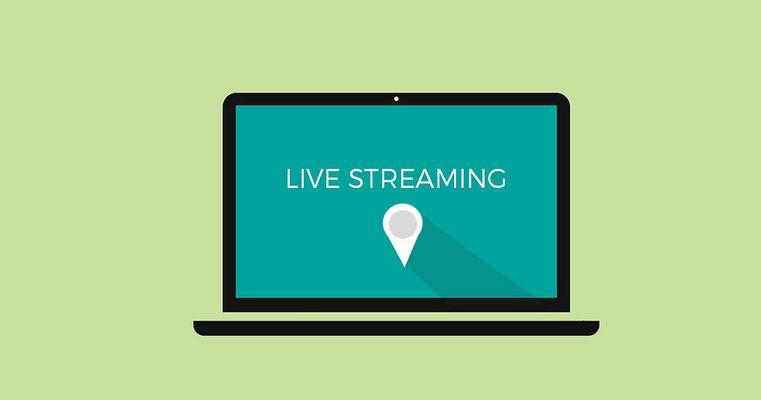Live Streaming in 2018 - We're live in 3, 2, 1
Live streaming is a proven way to engage your audience further and grow a community online. So, here’s all you need to know about Live Streaming in 2018. Now, you may or may not have heard of live streaming, but in 2018, it’s going to become an essential part of your business and branding. With video content becoming more and more important, especially on social media, businesses should be investing into creating video content for all their channels, but more specifically – live streams. Yes, you may have seen it on various social channels like Facebook and Instagram, and some sites are solely dedicated to live streaming like YouNow and Periscope. The concept, is you set up your phone or camera to effectively broadcast to an audience online, in real time. After the broadcast ends, there’s an option to save the video to your after the stream has ended, so it remains as content on your channel. But why are we talking so much about live streaming? Well, it’s an excellent way to engage your following on Facebook and other social media channels. Live videos typically have better engagement stats, including likes, shares, retweets, etc. which means a better chance of getting your content seen. According to LiveStream.com, around 80% of those who took part in a survey, conducted by the website, said they would rather watch a live video than read a blog (ironic us writing this blog post, but hey, only 80% prefer it right?). In this post, we’ll be outlining and detailing everything you need to know about Live Streaming. From what services to use, to what you can use live streaming for and including the benefits and the drawbacks of each. This is everything you need to know about live streaming in 2018.
To Prepare or Not Prepare
One of the biggest appeals of live streaming, from the viewer's point of view, is the informality of the video content. Overproduced videos and adverts can feel too much at a time, whereas live streaming hits a sweet spot between being unrehearsed and entertaining. However, unrehearsed doesn’t mean unprepared. See, whilst the informal formal is great, going into a live stream with nothing to say is not the way to go – unless you’re excellent at improv… That means setting some goals for the live stream. What are you looking to achieve through this video? Are you hoping to host a seminar providing industry tips to other professionals, or broadcast an interview with an expert or influencer? It’s ideal to set yourself some aims for the purpose, results and tone of the live stream. Are you going to be completely informal or keep the tone professional? The way you carry out your stream leads perfectly to our next point.
Know the Crowd
Your audience should always be at the heart of your live stream, after all, it is for them. You’re trying to connect with your audience, in the hopes of marketing, promoting or even just entertaining followers for those sweet likes and shares. It starts by asking yourself, is what you’re providing (through your stream) which is of value to your audience, and do you have the authority to truly entice and provide this to your audience. Say you’re streaming a video about digital marketing basics, are you a leading professional in that industry or can you bring someone in who has the expertise?
What you need
So, you’ve got your plan and your intentions, but what about the equipment required to live stream? Other than the service to use (e.g. Facebook, Instagram, Periscope) you’ll need the right broadcasting equipment to live stream. Whilst users favour quality, you don’t need top of the line filming equipment, microphones, mixers etc. Some of the best quality streams are done through a quality phone camera with a stabiliser grip, some good lighting and space where sound travels well, and finally a good WIFI connection, to make sure the video quality is steaming in HD. After a few successful streams, maybe look into better equipment to really enhance your viewers' experience. Better quality streams will always outperform the lower quality ones, so consider investing in the future. 
Live Streaming Tips
Once you’ve got everything set up and ready, it’s probably time to stream. However, we’ve got some handy tips before you dive into your streaming mission.
1. Be Real
We’ve spoken a lot about the informal tone of live streams, but we’re going to keep mentioning it till it hits home! Users and viewers want their live streams to be real. That means, real people being, well, people. You need to appear human to an audience. Have fun, make jokes – anything to make yourself appeal to a wider audience. Even if you mess up what you’re saying, the value of appearing human makes the experience more personable.
2. Promote, promote, promote!
Promoting your stream on social channels, your website or even mentioning it to your friends can do wonders for you. The idea is to get your stream out there, so, make sure you have an audience for your video. Look into paid social promotions and share it throughout your business. The more you promote, the more likely your stream will be seen.
3. Lights, Sound, Connection
Finally, before going live, make sure you’ve got everything ready and rearing to go. You need good quality lights, be it natural or studio, and to make sure your sound quality is notch. Nothing makes a live stream video flop then bad picture and sound. We’ve said it once, but we’ll say it again, make sure you have a good connection! No one wants lag or their video to cut out halfway through the stream, so make sure the WIFI is running smoothly so your stream does too. 
Live Streaming Platforms
Now we’ve hopefully shed some light on the live streaming process, we’re going to look into the different platforms you can use to stream your content. Some are built into social media sites and some are their very own streaming sites, created for the purpose of broadcasting content. But picking your streaming site is all about which platform will benefit your business and the nature of your video the most. Below, we’ll be looking into 6 different platforms, discussing what they are and both the pros and cons of each of our choices. Here we go!
Our first streaming option, and by far one of the best ones you can use, is Facebook Live. Yes, you’ve guessed it, this one’s available through the social media network that is Facebook. Any user signed up for the service can go live at the touch of a button, and broadcast to their friends or anyone that follows their page. Through Facebook live, those viewing your live stream can react with likes, shares and comments on the post. You can also use Facebook’s paid advertising feature, to promote your live stream on your desired demographic’s timelines. Since most businesses have Facebook pages, this is a handy feature that allows you to reach out to the followers, who are your customers or clients. Throughout your live stream, you’ll have access to Facebook’s excellent analytics and your followers or friends will also receive a notification when you go live. However, you’re unable to control what ads are shown throughout your live stream. Pros – Good analytics. Push notifications for friends/followers when you go live. Cons – No control over ads alongside your stream.
YouTube Live
YouTube is a huge video platform online, which means that their live streaming feature is one of the most refined in the realm of social media streaming. YouTube live is one streaming service that actually integrates SEO elements into the platform, making your live video more optimised for search engines. Many businesses use YouTube live to stream conferences, talks and more. However, you are unable to alert your subscribers on YouTube about your live stream, as there is no notifications option available. Pros – Considers SEO. Huge platform for video content. Cons – No notifications.
Instagram Live
A while back, Instagram introduced a Snapchat-esque feature, that allowed users to create posts for their profile that would last for 24hrs. Since then, Instagram moved into using these stories as live streaming platforms as well. Whilst this service is responsive, sends notifications and allows you to stream with another user in a joint video, your video is only available for 24hrs after the stream ends. Your stream won’t be searchable too, as it can only be found at the top of the homepage (by followers) or on your profile page. So, unless someone is browsing your page within those 24hrs, chances are the video won’t be seen by a wide audience, like it can be on Facebook (as Facebook streams are searchable). Pros – Notifications for followers when you go live. Cons – The video is only visible for 24hrs after the stream ends. Your stream won’t appear in searches. 
Owned by Amazon, Twitch is a streaming service which is aimed towards gaming and sports video content. This service is a great streaming option if your market is a younger audience, however, this is the platform's shortcoming too. Whilst it’s great for the specific demographic, it’s really only ideal for that audience, unlike Facebook, YouTube and Instagram which all have a diverse array of users online. Pros – Young demographic. Cons – Highly specific demographic.
This streaming service is powered, mainly, by influencers and their following. Many influencers use YouNow as their preferred streaming service, to deliver live content to their audience. You can use hashtags, so your video is discoverable, and you can also be searched by your username. Like Twitch, it has a younger audience. Users can comment on streams, in real time, which boosts engagement but leaves the streamer no control over the content that appears in the comments. Pros – Young audience. Influencer driven. Cons – Lacks control over comment screening.
Periscope, the streaming service owned by Twitter, is the final service we’ll be looking into. Periscope is fairly easy to both understand and use whilst also having many features (including 360-degree videos). However, like Instagram streams, the video content isn’t searchable by users. Pros – Easy to use. Cons – Video content isn’t searchable. Whilst many of these services have their own benefits and drawbacks, you should decide by picking the right one for your audience. If you’re aiming your content towards a younger audience, maybe enlist the services of Twitch or YouNow. Want to reach a wider audience? Maybe consider using Facebook Live, to reach all your followers and friends, as well as having some great analytics on hand too. It’s all about choosing the best platform for your streaming content. Remember to always consider your audience. Get your equipment ready and prepare yourself for your stream. Get ready to go live in 2018!













